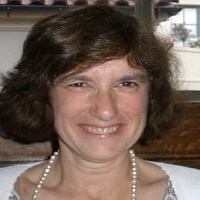Angelenos might be dismayed to know it. But Professor Vinit Mukhija will tell them: Mumbai, one of the poorest cities in the world, can teach them some things about improving life for L.A.’s tens of thousands of homeless.
In Mumbai, India’s biggest city, says Mukhija, chair of Urban Planning at UCLA’s Luskin School of Public Affairs, relatively fewer people sleep on the streets than in Los Angeles or New York.
There is more poverty, but both the lower middle class as well as millions of the poor, he said, inhabit the sort of large communities of unpermitted shelters or makeshift huts that characterize Rio de Janeiro’s favelas and the slums of cities in other developing countries.
After years during which the number of people living on Los Angeles streets or in their cars has soared, city and county officials are now focused on building permanent housing for the homeless and providing the social services necessary to help them rebuild their lives. But those units will take years to complete. Meanwhile, Mukhija believes that local leaders can adopt several other measures, some of which he has studied in Mumbai and elsewhere, that would make life “more dignified” for those without shelter.
“Permanent housing cannot be the only solution,” he said. “It’s just one part of a range of solutions.”
The “informal city”
Mukhija, 50, joined the Luskin faculty in 2001 after training as an urban planner and architect at M.I.T., where he earned his Ph.D., and at the University of Texas, the University of Hong Kong and the School of Planning and Architecture in New Delhi. A native of India where his father still lives, Mukhija was soft-spoken and relaxed during a recent interview in his Luskin office, a windowless but exquisitely tidy and serene refuge where the spines of all the books on his shelves align like soldiers in formation.
He described his broad interest as the “informal city”—how people find shelter and earn a living through unregulated economic activities. Think street vendors and people living in unpermitted converted garages. Mukhija’s research projects have focused on slum upgrading and redevelopment in Mumbai, on unpermitted trailer parks in California and on garage conversions in L.A. as a form of affordable housing – what he calls “stealth density.” In his teaching, he draws upon years of experience as an urban planner in China, the Middle East, as well as in India.
In Mumbai, he said, half the population lives in slum settlements or informal housing arrangements. Similarly, homeless encampments have sprung up in the Los Angeles area, under freeway overpasses, near abandoned buildings and along the Santa Ana River in Orange County. In both India and California, Mukhija said, these settlements serve the same basic human need for a stable place to sleep and eat. That’s why, when police periodically clear these tent camps, responding to neighborhood complaints of drugs, crime and possible disease, people with no place else to go often return or set up new settlements nearby.
The shacks and lean-tos in Mumbai, Mukhija said, were originally built by people who simply “squatted” on vacant public or private land. The oldest settlements date from the 1940s. Some have been upgraded with electricity, water and sewer connections. Evictions are rare, and the upgrades speak to the fact that public officials by and large accept that these settlements respond to a need.
The goal for L.A. policy makers, Mukhija said, certainly should not be to recreate Indian slums. But officials should recognize, he said, that people without a permanent or even semi-permanent home, here as elsewhere, continue to search for some measure of stability – a place where they can return each night to eat and sleep and store their possessions.
Homelessness spreads, the public notices
To some extent, Angelenos realize this.
In recent years, city and county voters have approved more than $1.5 billion in sales tax and bond funds to build thousands of units of supportive housing and to hire outreach workers, mental health experts, anti-addiction specialists and other professionals to help the homeless. While more promises than action have characterized homeless policy, Mukhija and others detect a new sense of urgency. He attributes this resolve to the fact that a large number of unsheltered people have spread out beyond Skid Row to sidewalks and parks across the region, including in wealthy enclaves like Santa Monica and Beverly Hills.
“The good thing about homelessness being more dispersed,” Mukhija said, “is that people are paying more attention.”
Construction of additional housing is a key part of the response. But because, as Mukhija noted, housing is “expensive and time-consuming to build,” local leaders are also turning to other more temporary forms of shelter and assistance. Many of these interim and often smaller solutions draw on research that he and others have published on the need for a variety of temporary shelter options and other services.
So-called “safe parking lots,” for example, allow individuals and families living in cars, trucks or recreational vehicles – an estimated 25 percent of all homeless residents in L.A. County – to lawfully park overnight at locations, many with wash facilities and social workers on site. Safe Parking L.A., the nonprofit that negotiates use of the sites in Los Angeles and oversees their operation, models its program after successful efforts in Santa Barbara and San Diego. Founded in 2016, Safe Parking L.A. currently runs parking sites at a mid-city church and at the Department of Veterans Affairs in West L.A. It plans to open more.
The A Bridge to Home program, also in Los Angeles, has a similar goal – to open emergency shelters in each council district across the city and temporarily house up to 1,500 people. The effort is modeled after a pilot project in development downtown, where trailers are being installed for 45 homeless people on a former parking lot. Mayor Eric Garcetti has made construction of these shelters a high priority and allocated $20 million to the initiative. While efforts to create the first shelter outside of downtown, on Vermont Avenue in Koreatown, generated such fierce opposition from local residents that the City Council has recommended further study.
New focus on accessory units
Mukhija would also like to see Los Angeles officials encourage construction of more accessory dwelling units (ADUs), so-called “granny flats.” He estimates there are at least 50,000 unpermitted secondary units on single-family homes in the city. Officials have historically taken a dim view of these detached backyard structures and garage conversions, but Mukhija sees more ADUs as a way to increase the number of affordable rental units, especially in gentrifying urban neighborhoods.
State lawmakers agree and recently passed legislation making it harder for cities to block ADU construction in neighborhoods zoned for single-family homes. Senior City Planner Patricia Diefenderfer and her colleagues at the Los Angeles Department of Planning are drafting a new zoning ordinance that would permit ADUs while remaining sensitive to needs and conditions in different neighborhoods, such as the topography in hillside areas.
ADUs are “a way of gently lacing in additional units in a way that doesn’t materially change the nature and character of neighborhoods,” Diefenderfer said. This is “not ‘big a’ affordable housing but ‘little a’ affordable” because these units cost less to build than larger, multi-family structures.
LA-Más, a Los Angeles non-profit, wants to incentivize homeowners into building backyard dwellings. Working with L.A. County officials, the group is launching a pilot project that would provide three homeowners with financing and architectural assistance to build backyard ADUs. In exchange, the owners would commit to renting to low-income tenants eligible for a Section 8 housing subsidy for five years. Another backyard unit is already being built at a Highland Park home under an initiative supported by Garcetti’s office.
LA-Más, where Mukhija is a board member, also has embarked on a series of smaller improvements to make urban life more welcoming and safer for pedestrians, including the homeless. LA-Más is installing brightly-painted outdoor furniture and whimsical structures on an empty lot at Ivar and Selma in Hollywood, as well as along the sidewalk on a stretch of Reseda Boulevard. The colorful additions are meant to invite residents to sit and talk with the homeless and generate a sense of community, said Helen Leung, LA-Más’ co-executive director. “Everyone,” she said, “has the right to enjoy a public space.”
Even small measures help the homeless, Mukhija believes. Students in one of his classes, called “The Informal City,” explored how people access toilets in Westwood. The students interviewed passersby, including a homeless man. He said that he felt uncomfortable entering businesses like Starbucks to use a bathroom, because carrying his belongings identified him as a homeless person. If this man had a place to store his possessions, Mukhija said, he could use the toilet more easily.
Sending students off campus to observe the real city and interactions among its residents is a key part of Mukhija’s teaching. That approach is part of what attracted Connor Johnson to Luskin for graduate work. He knew about Mukhija’s research on informal economies and was “really excited” to study with him.
Even before his graduate work at UCLA, Johnson had founded Would Works, a nonprofit that trains the poor and homeless in basic woodworking. Would Works helps them set modest financial goals – for example, to pay for security-guard training, or to buy furniture for an apartment – and employs them at a downtown workshop to meet their goals. Through this process, the homeless learn skills, earn up to $600 toward their goals and gain a job reference. Would Works sells their hand-crafted products.
Johnson believes this short-term goal setting and employment can “provide a bridge to larger goals,” noting that many poor people are “stuck meeting short term needs.”
In 2016, Johnson completed his graduate work and is now a senior program manager with the Corporation for Supportive Housing, based in Minneapolis. He remains actively involved in Would Works. Like Mukhija, he is optimistic that new energy and thinking about poverty in Los Angeles will make a difference. “Because the problem is great,” Johnson said, “the ability to solve it is also larger.”
As Mukhija said, “Homelessness is not going anywhere, but we should see the numbers decline if we can provide these alternative options.”

























